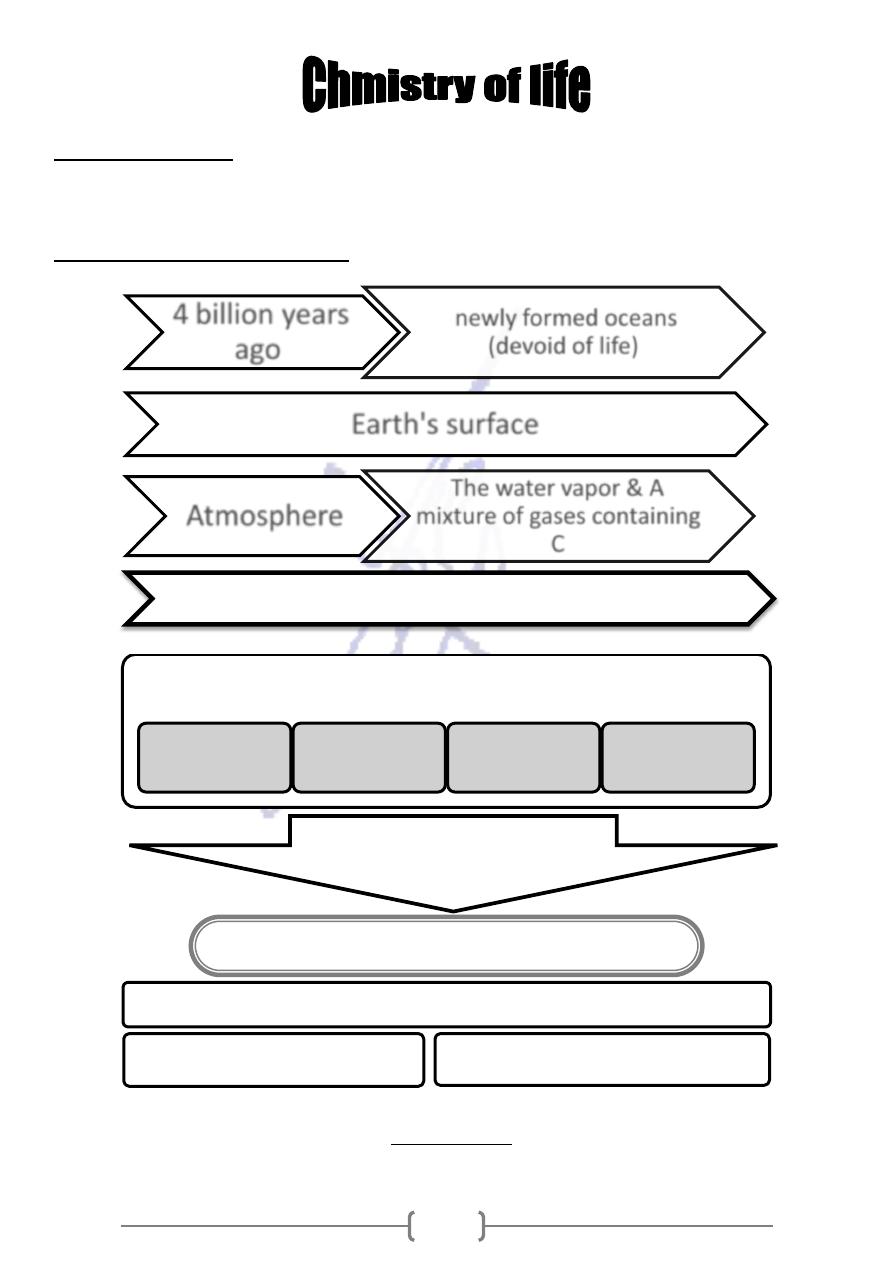
9
Is the scientific study of the molecular basis of life processes ,
Molecular biology:
including cellular respiration, excretion and reproduction.
Organic molecules first formed in oceans.
:
originated)
(How life on earth
The life is dependent on carbon-based- that is organic – molecules. In living
96%) of the body
S (
H,N,O2,P&
binds to itself, or with
things, C
(The differences between organic and inorganic Table3-1)
4 billion years
ago
newly formed oceans
(devoid of life)
Earth's surface
Atmosphere
The water vapor & A
mixture of gases containing
C
Bombarding the planet was on assortment of
energies
lightning
ultraviolet
Radioactive
decay
volcanic heat
Caused the first carbon-based
molecules to form
The first cell (s) came into existence
Organisms are made of
Simple inorganic compound ex. Nacl
Complex , organic compound.
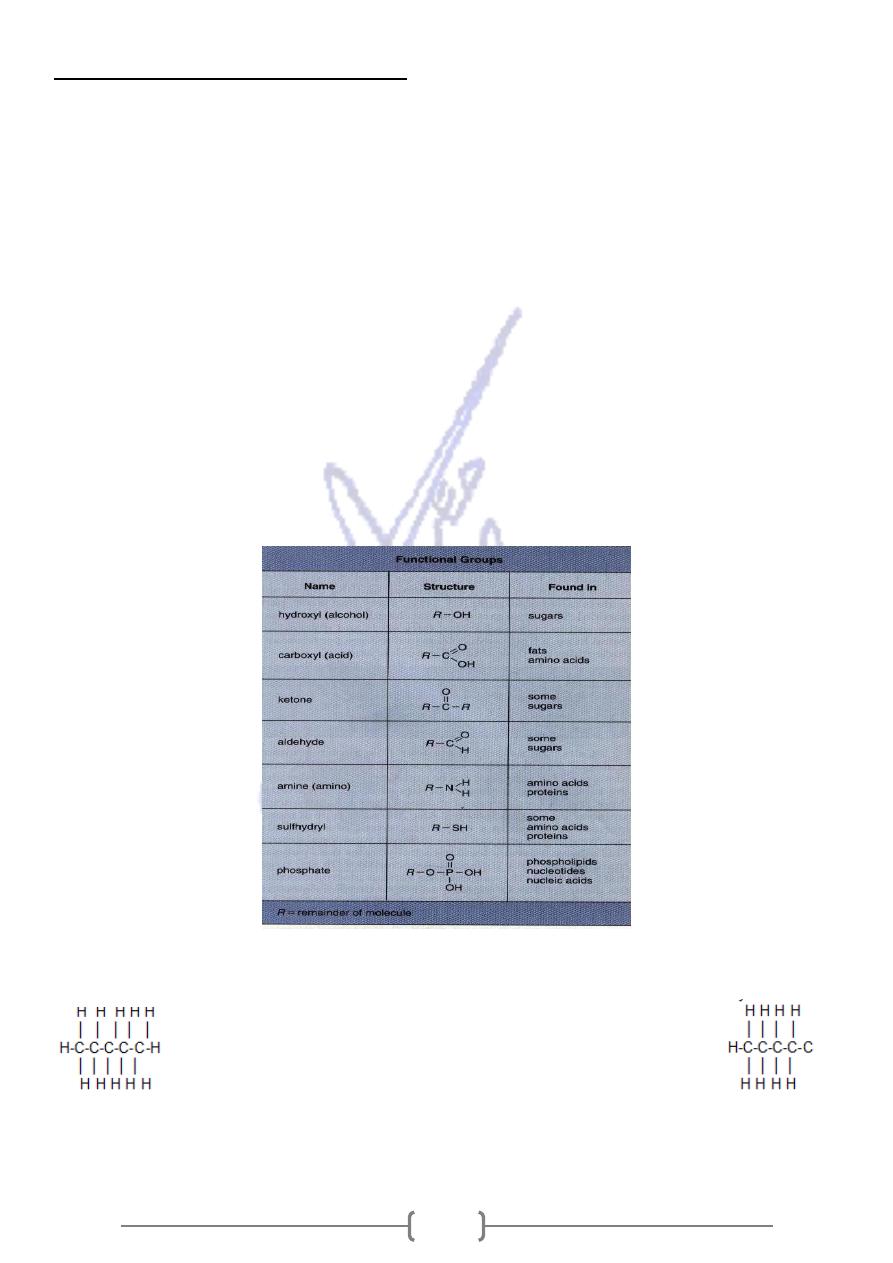
11
Cell contains organic molecules:
An organic compound is made of carbon covalently linked to carbon or to
hydrogen. The major groups of biologically important organic compound are
carbohydrates, lipids, proteins, and nucleic acids
The properties of carbon atoms make them extraordinary versatile, able to form
the backbones of the large variety of organic compounds essential to life:
A- Each C atom can form 4 covalent bonds with 4 other atoms, single, double,
or triple bonds. organic molecules:
B- Carbon form covalent bonds with different elements, and can form straight
or branched chain or can join into rings.
Organic compounds are made of specific functional groups [Clusters of certain
atoms that always behave in a certain way can be attached to the carbon chain].
Functional groups help determine the characteristics of organic molecules that
used in industrial synthetic compound.
Some F. groups are hydrophobic (not attached to water), and some are
hydrophilic (attached to water) F. 3-2
Ex: Carboxyl (acid) _COOH can give up H- and becomes ionized to COO- . Then
the molecule becomes hydrophilic because the polar group interacts with water.
Hydrocarbon (nonpolar) Acid in ionized form (polar) hydrophilic
Other f. groups (-OH, and –NH2) are considered to be polar.
F
F
.
.
g
g
r
r
o
o
u
u
p
p
s
s
a
a
d
d
d
d
d
d
i
i
v
v
e
e
r
r
s
s
i
i
t
t
y
y
t
t
o
o
o
o
r
r
g
g
a
a
n
n
i
i
c
c
m
m
o
o
l
l
e
e
c
c
u
u
l
l
e
e
s
s
.
.
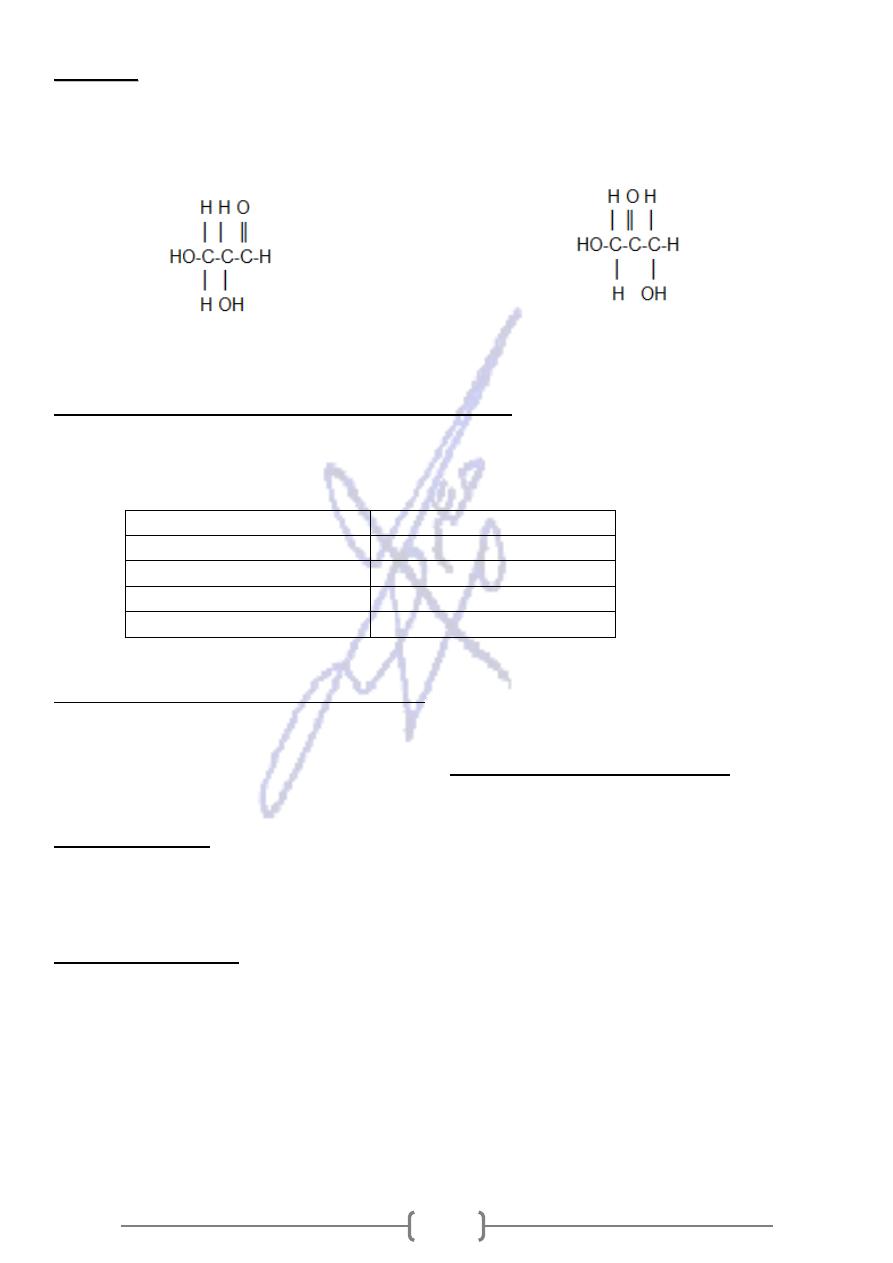
11
I
I
s
s
o
o
m
m
e
e
r
r
s
s
:
: are molecules that have identical molecular formulas, but they are different
molecules, for ex. C
3
H
6
O
3
are assigned different chemical names because the molecules
differ structurally
.
a.Glyceradehyde b.Dihydroxyacetone
Large organic molecules have monomers:
The large organic molecules in cells are macromolecules, polymers formed by the
joining together of monomers ex.
Monomer
Polymer
monosaccharide
Polysaccharide
Glycerol& fatty acid
Lipid( e.g. fat )
Hundreds of amino acid
Protein
Hundreds of nucleotide
Nucleic acid
How do macromolecules get so large??
Cells use the modular approach when constructing macromolecules. Monomers
are joined by an identical mechanism. Condensation and hydrolysis.
-
:
Carbohydrates
1- Sugars 2- polysaccharides
Contain C, H, &O
2
in a ratio of approximately one C to two H (CH
2
O).
6C)
-
Are simple sugars ex. Glucose in the blood (hexoses
Monosaccharide:
-
A
Fructose in the fruits (=========)
Ribose in RNA (Pentose-5C)
Deoxyribos in DNA- (=========)
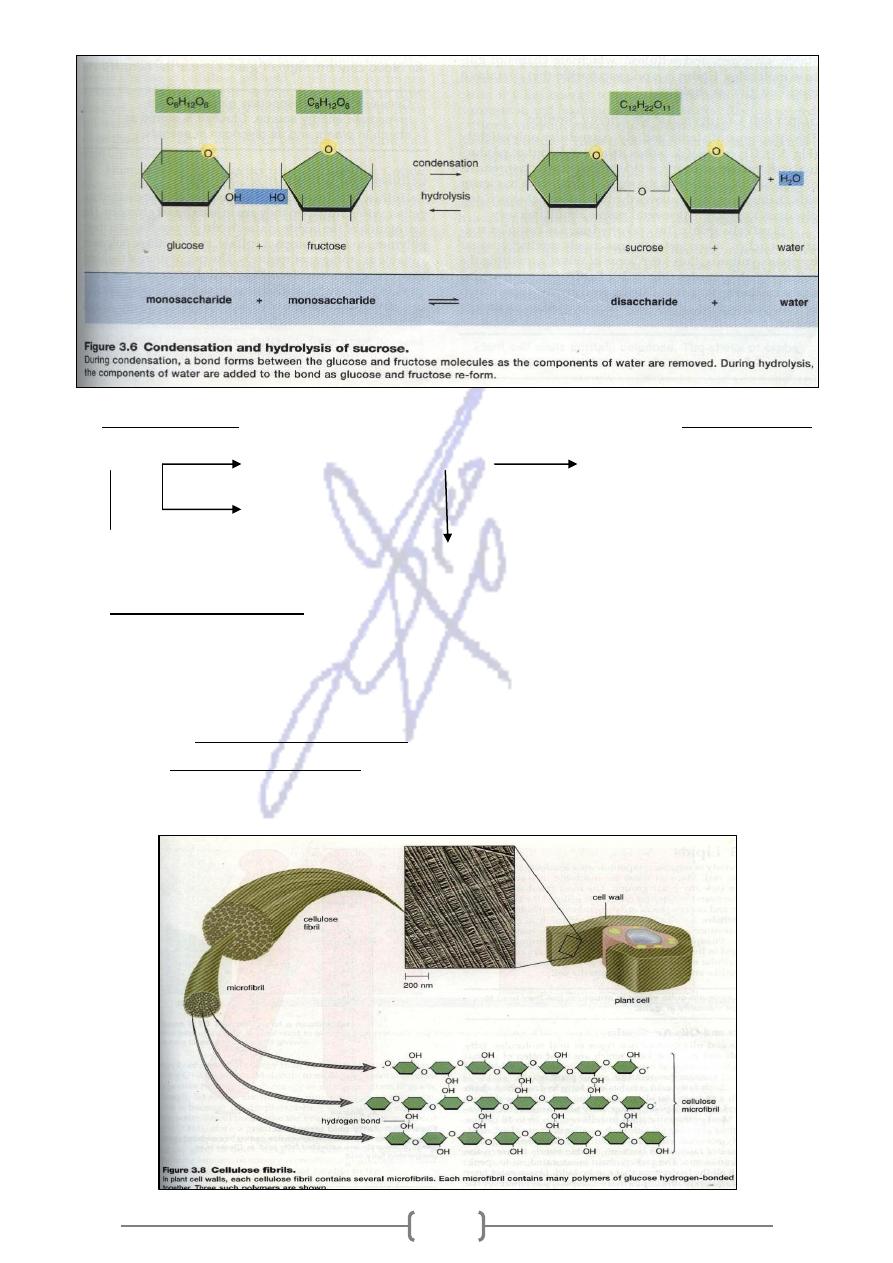
12
condensation
contain two monosaccharide that have joined by
Disaccharide :
Lactose Galactose Maltose Two glucose molecules
Glucose
Milk Digestive tracts as result of starch digestion
-
Polysaccharides:
-
B
•
Long chain of repeating units of a simple sugar. The most common
polysaccharide in living things is starch, glycogen, and cellulose. Chitin is a
polysaccharide that contains a modified glucose molecule.
•
Glycogen has many side branches
•
Starch has fewer side chains
•
So cells use sugars, especially glucose, as an intermediate & as glycogen in
animals.
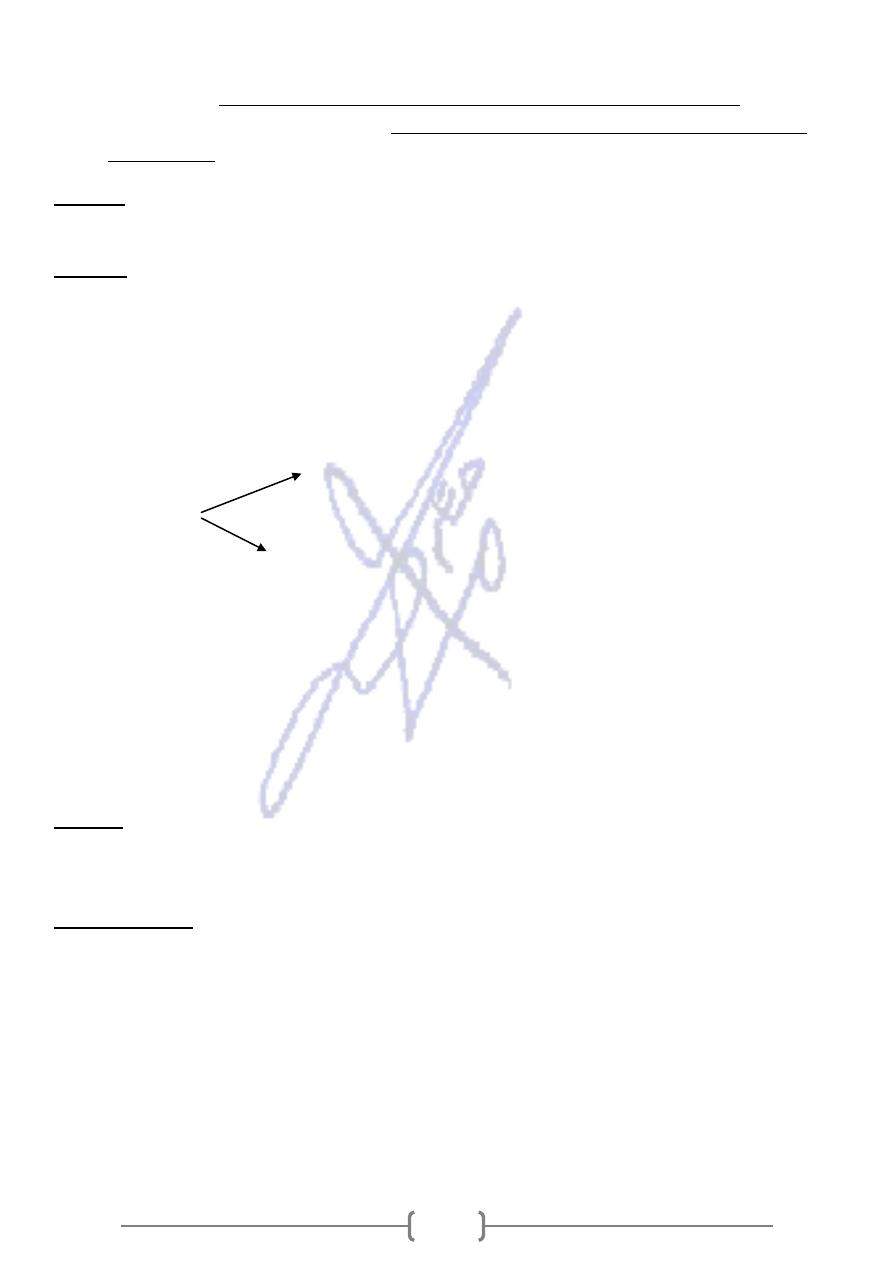
13
Humans have found many uses for cellulose. Most animals digest little cellulose
because the enzymes that digest starch are unable to break the linkage between
the glucose molecules. Even so, cellulose helps the body maintain regularity of
elimination.
have
Scientists
.
polymer of glucose
exoskeleton of crabs, insect, is also a
-
Chitin:
discovered how to as turn chitin into thread that can be used as structure material
-
with few oxygen
regions,
hydrocarbon containing
composed of
molecules are
-
Lipids:
containing (polar or ionizing) functional groups. Lipids have a greasy or oily
consistency & are *relatively insoluble in water.
Fats and oils are similar contain fatty acids & glycerol.
Fatty acid consists of a long hydrocarbon chain with a carboxyl (acid) soluble in
water.
Saturated have double bonds
Fatty acid
Unsaturated have double bonds in C chain
Fats have mostly saturated acid while oils tend to have unsaturated fatty acid.
Diets high in fat have been associated with circulatory disorders.
Glycerol is a compound with three hydroxyl groups which are pola. F. 3-10
Triacylglycerol, the main storage form of fat in organisms, consists of a molecule
of glycerol combined with three fatty acids. Nearly all animals use fats for long –
term energy. Storage – fats have mostly C-H bonds, making them a richer supply
of chemical energy than carbohydrate & glycerol.
chain of alcohol, hydrophobic, resistant
–
chain fatty acid bonds + long
–
a long
Waxes:
to degradation. In animals, are involved in skin, in human, wax is produced by glands in
the outer ear canal, to trap dust and dirt particles
components of cellular membranes. A phosphate group
structural
are
:
Phospholipids
is polar group that can ionize and therefore is hydrophilic. Phospholipids. Are
constructed like neutral fat, except that in place of the third fatty acid, there is a
phosphate group or phosphate and nitrogen .
So the phospholipids have a polar head and no polar tails (hydrocarbon chains).
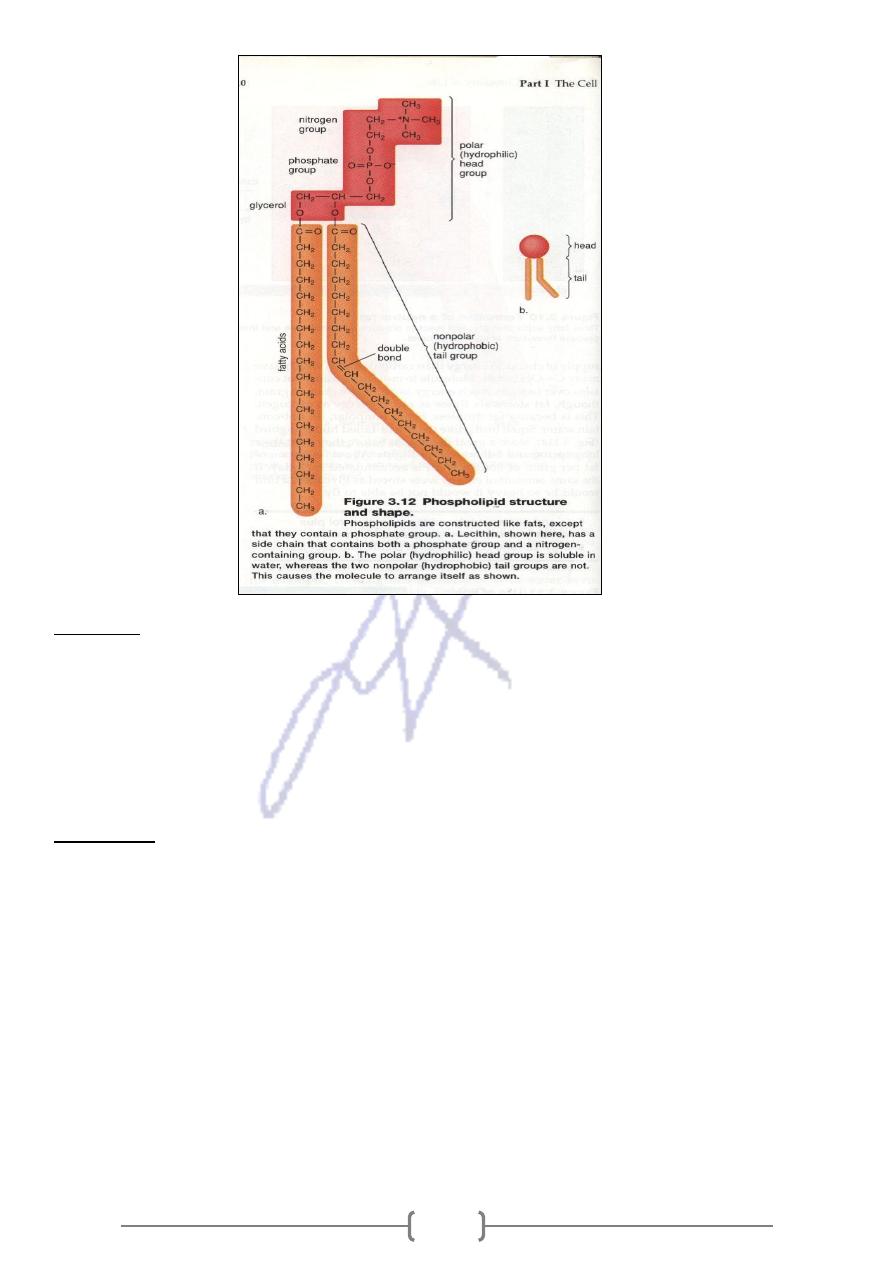
14
different structure from neutral
an entirely
have carbon rings = lipids have
Steroids:
fats. Cholesterol is the precursor of several other steroids, including aldosterone
(regulate the Na+ content of blood, & sex hormones). Bile salts are also important
steroids.
a diet high in saturated fats & cholesterol can lead to reduced blood flow caused
by the deposit of fatty materials on the lining of blood vessels.
are large , complex molecules made of simpler subunits , called amino acids
Proteins:
(monomer)that condense to form proteins
Structural proteins
a- keratin (hair & nail) b-collagen & fiber c- muscle-myosin &actin
1- Metabolic function:
a- cellular proteins (enzymes), speed up chemical reaction.
b- Insulin is a hormone that regulates the glucose content of the blood.
c- Hemoglobin transports oxygen in the blood.
d- The proteins in the membrane of cell have enzymatic and transport function
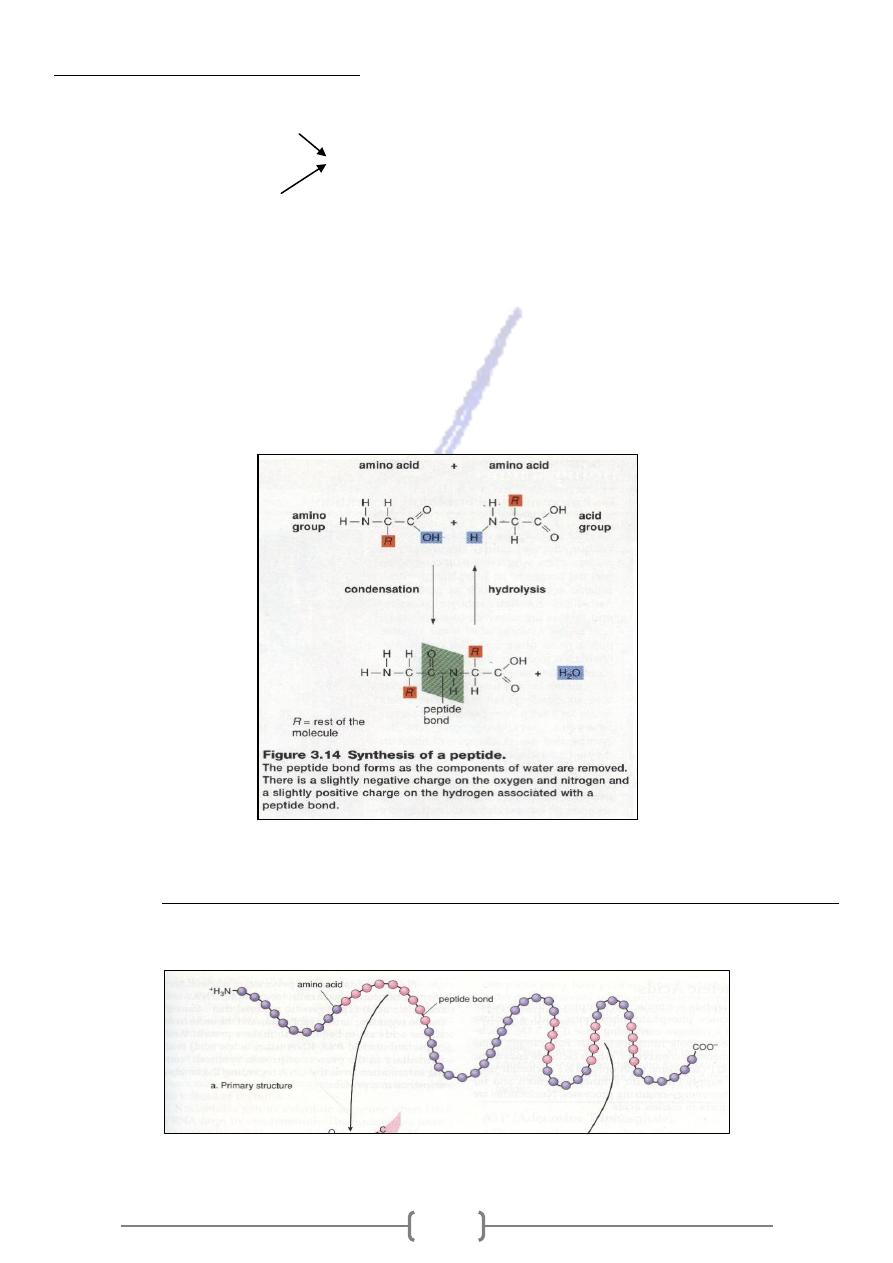
15
:
Peptide bonds join amino acids
Amino acid
Carboxyl acid –COOH → ionize at normal pH
so amino acids hydrophilic
Amino group –NH2
Represented the formation of polypeptide chains.
Amino acids differ in the nature of R group which ranges in complexity from a
single H+ to complicated ring.
There are 20 different amino acids found in cells.
The sequence of amino acids determines the shape of the protein, which is
important to its function.
Temperature & pH bring change in polypeptides shape
-
Four levels of organization can be distinguished in protein molecules:
1- Primary structure is the linear sequence of amino acids in the polypeptide
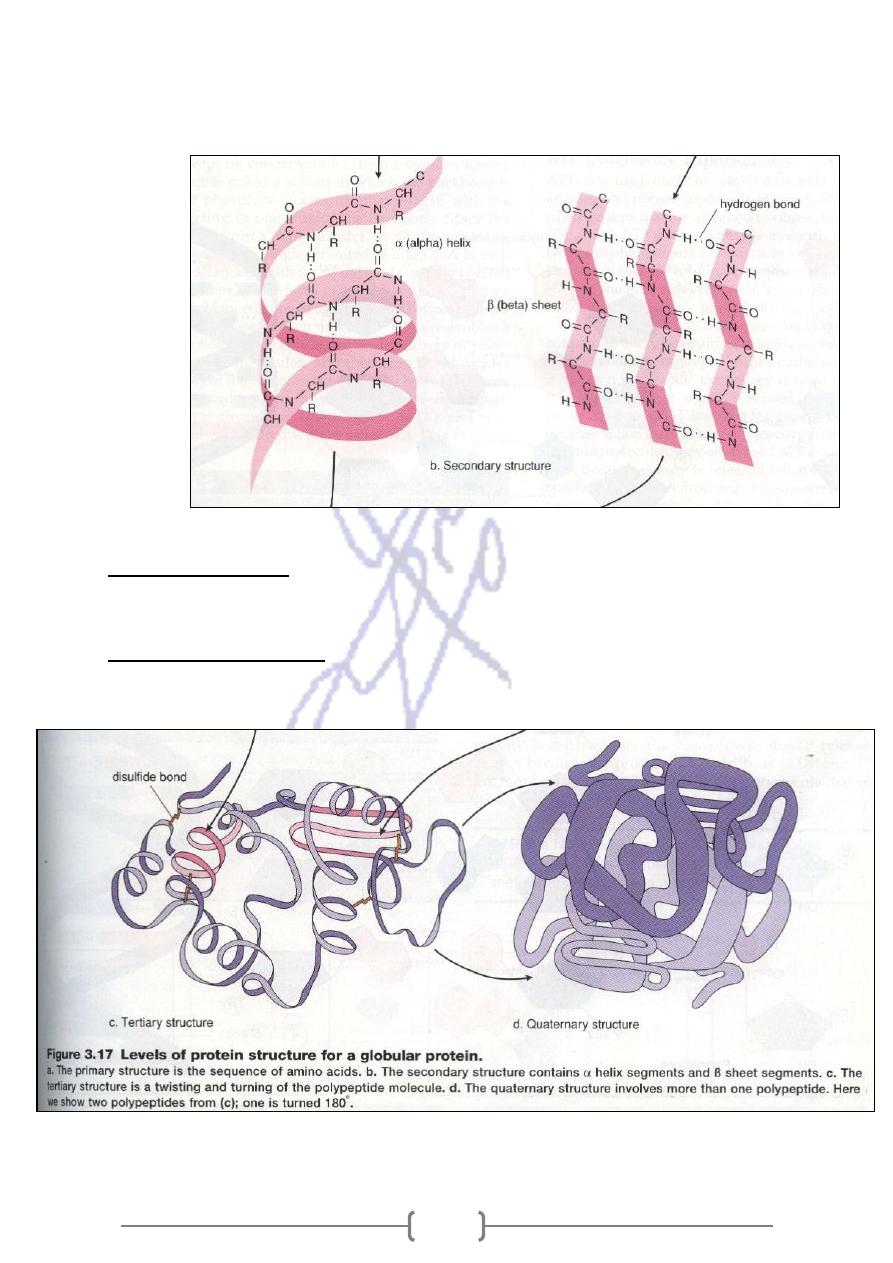
16
2- Secondary structure is a regular conformation such as helix or β- pleated sheet,
its due hydrogen bonding between elements of uniform backbone of the
polypeptide.
3- Tertiary structure:is the overall shape of the polypeptide chains, as dictated by
chemical properties & interactions of the side chain of specific hydrophobic
interactions, and disulfide bridges contribute to tertiary structure
4- Quaternary structure : Is determined by the association of two or more
polypeptide chains .The shape of a protein determines its function
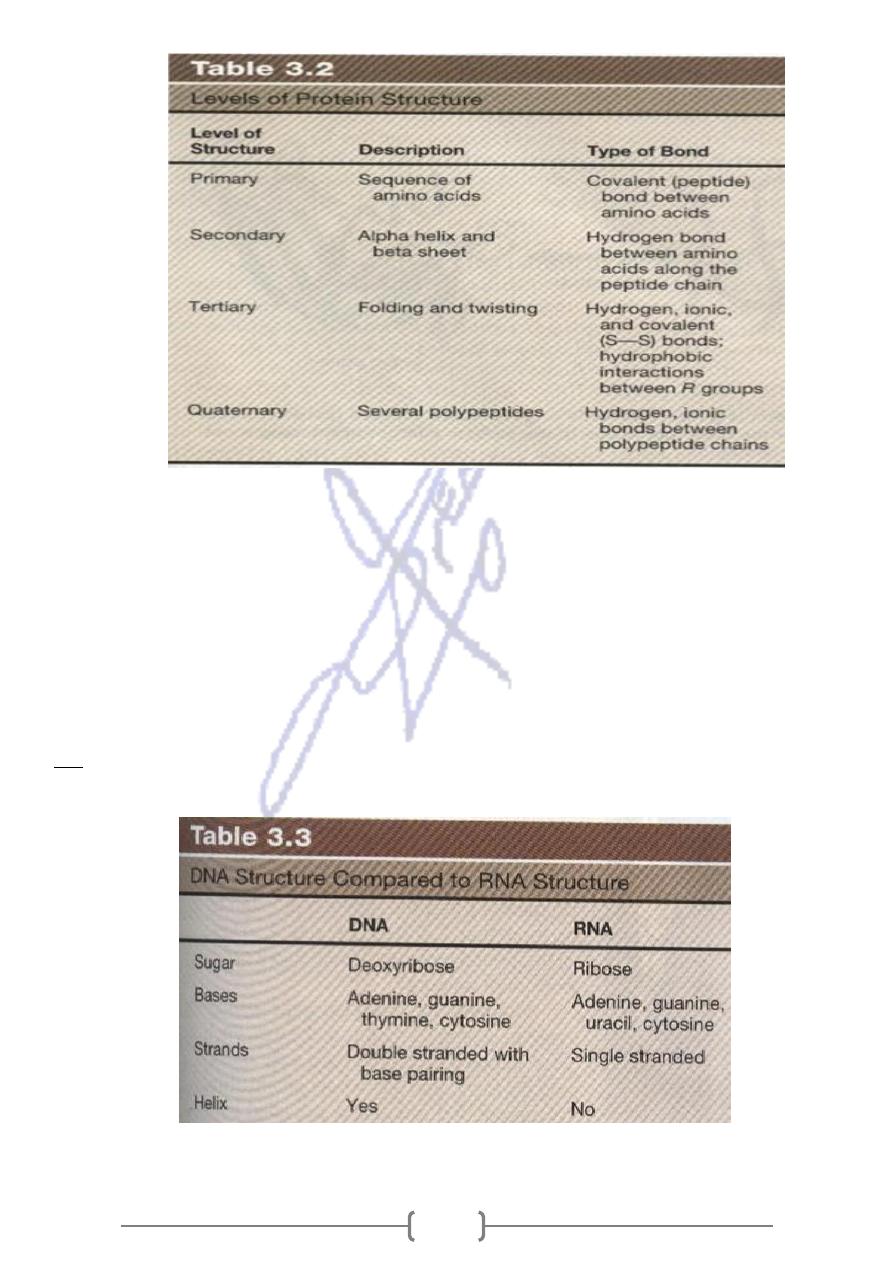
17
ATP (Adenosine triphosphate):-
Is a nucleotide which adenosine is composed of adenine and ribose- triphosphate
strand for the three phosphate groups that are attached to ribose , the pentose
sugar . it is a high- energy molecule usually in cells the terminal phosphate bond
is hydrolyzed leaving the molecule ADP and a molecule of inorganic phosphate
PP
So ATP is a high-energy molecule. ATP breaks down to ADP
+
releasing, which is
used for all metabolic work done in a cell.
on and
, the energy is used for contracti
muscle cells and in nerve cells
In
Ex:
conduction nerve impulse, respectively
*
*
